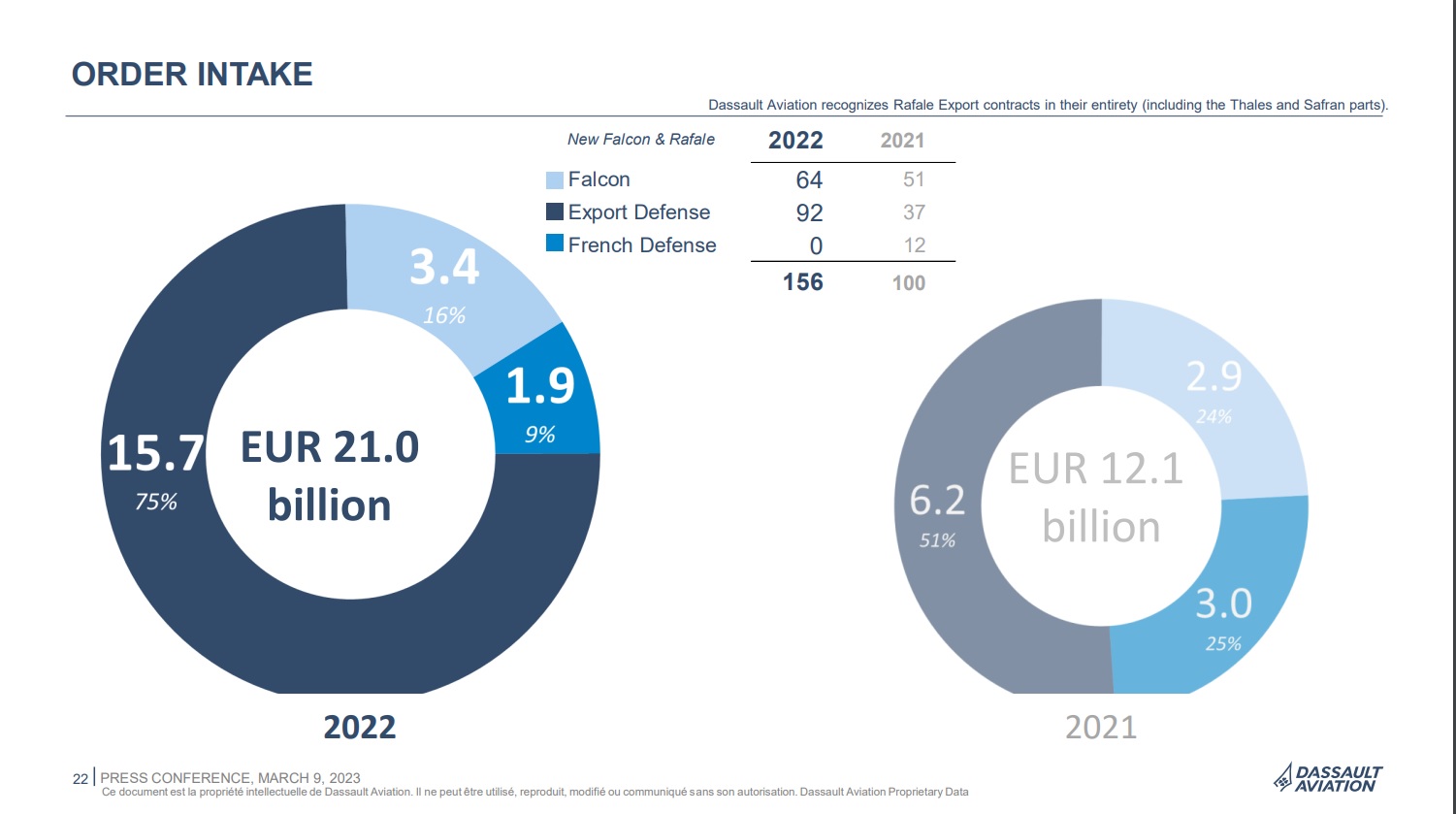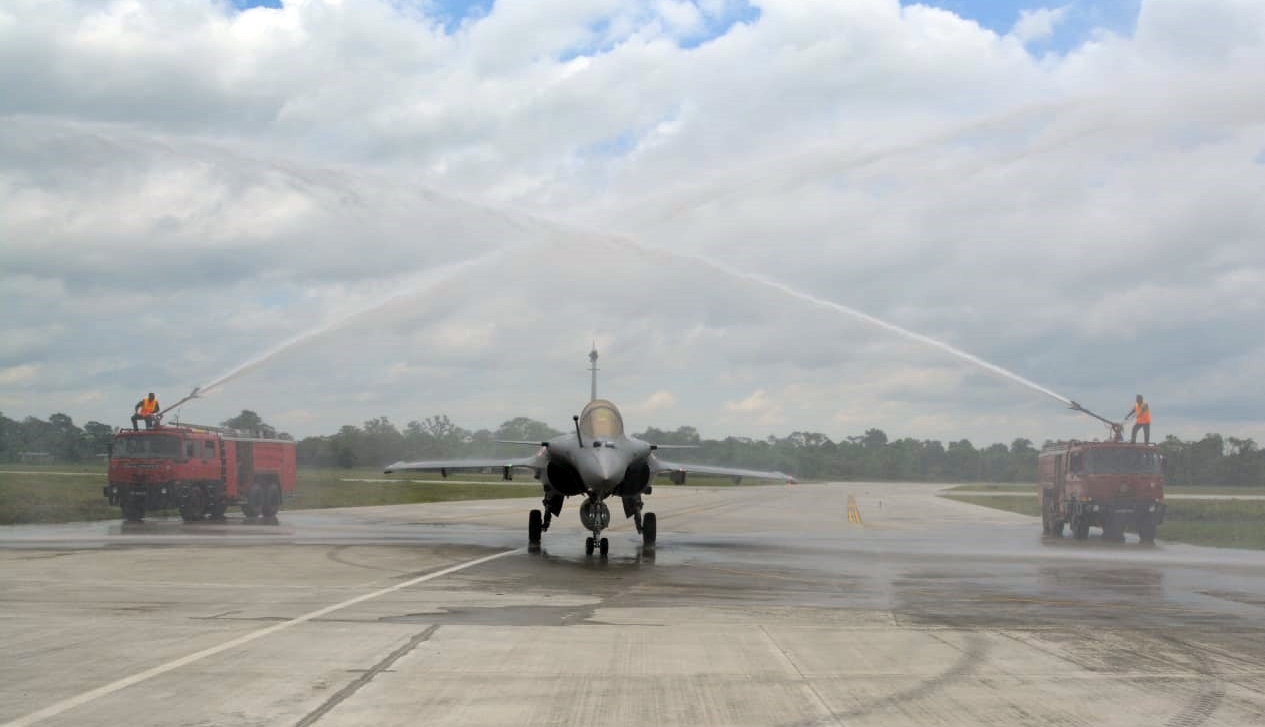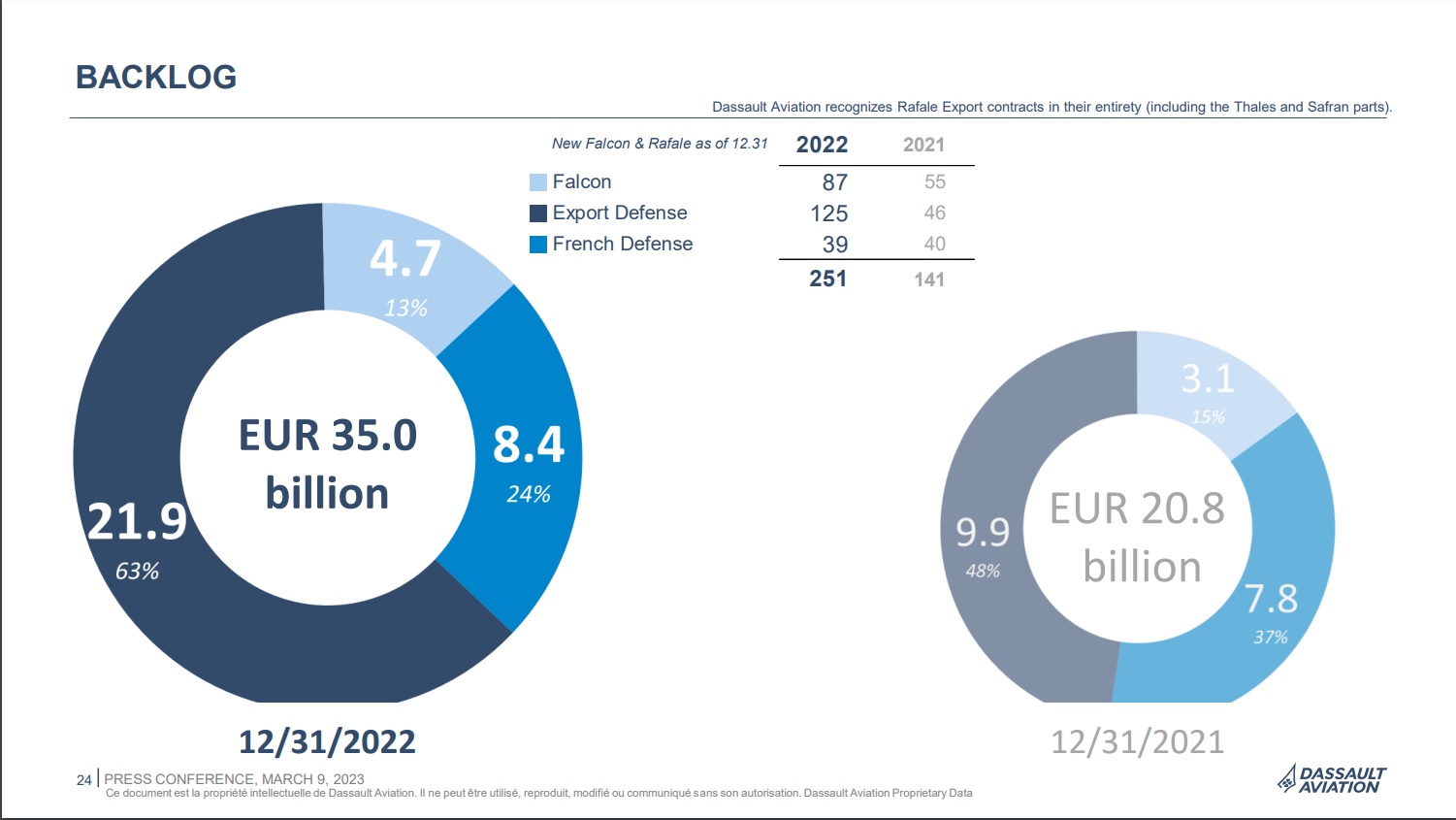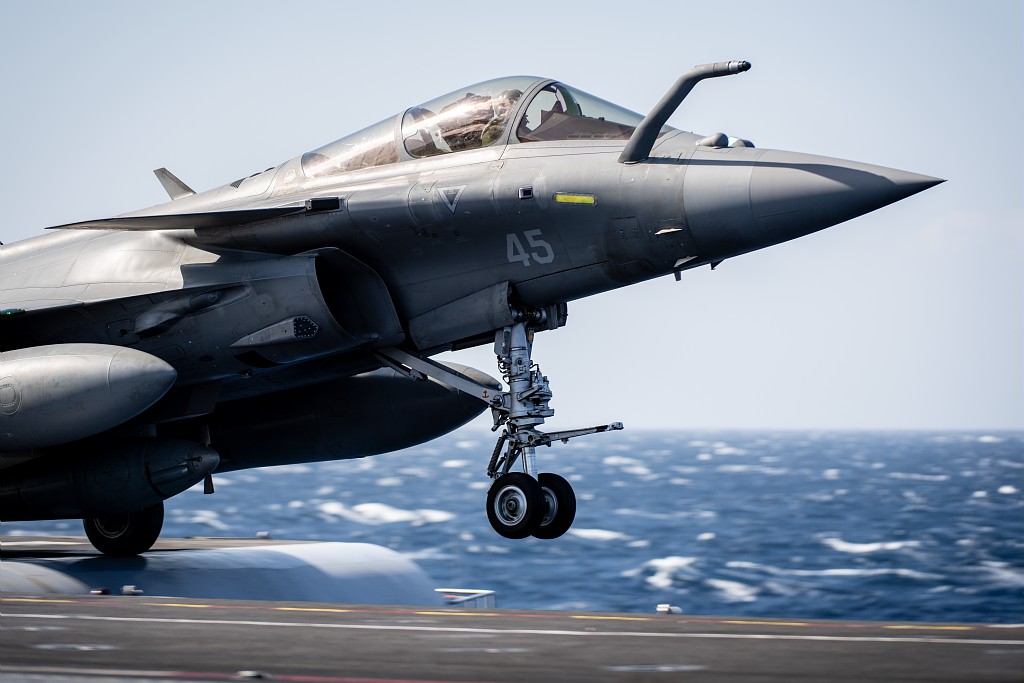The year of the Rafale: Dassault Aviation presented its financial results 2022
Éric Trappier, president and CEO of Dassault Aviation, presented the annual financial results for 2022, which exceeded expected earnings, thanks in large part to the great demand for Rafale fighters.
The French company, during 2022, registered an annual record of aircraft orders and exceeded its own profit forecasts. Export orders for Rafale fighters were the main driving force behind these good results.
2022, the year of the Rafale
By numbers
2022 was a year of breaking records and setting new all-time highs for Dassault. The company’s Defense product exports figure was €15,657 million in 2022, up from €6,173 million in 2021. This historic amount is due to the 92 Rafale ordered in 2022: 80 Rafale for United Arab Emirates, 6 for Greece and 6 for Indonesia.

During 2021, Dassault recorded orders from Egypt for 30 Rafale fighters – followed by an order for an additional aircraft to complete the original 2015 order, from Greece for 6 new and 12 second-hand Rafale (sourced from French Air and Space Force stocks, and repurchased by Dassault), and a support contract for Croatia following its acquisition of 12 Rafale, also second-hand, directly from the French government.
Deliveries
Here the numbers are not so flattering. The share of Defense exports was €3,616 million, compared to €4,549 million in 2021. This decline is largely due to the delivery of only 13 export Rafale (for India, Qatar and Greece), while 25 Rafale were delivered to foreign customers in 2021.

FY 2022 included the delivery of a Rafale to the Direction Générale de l’Armement (French defense procurement agency) after a four-year hiatus, at the request of the French State for budgetary reasons.
Backlog
Boosted by the mega-contract with the United Arab Emirates, the Rafale order backlog soared in 2022, allowing Dassault to speak of its fighter jet in terms of a «commercial success».

In addition to the 80 aircraft for the UAE, and the 6 additional fighters for Greece, the contract signature for 42 Rafale (6+36) for Indonesia is also important. Dassault has already received the first advance payment for the first six aircraft (included in the 2022 orders), although the entry into force of the contract for the remaining 36 fighters is still to be finalized.
As a result, the total Rafale order backlog as of December 31, 2022 amounts to 164 units, of which 125 are for export and 39 for the French Armed Forces.
Future export expectations
Colombia
Dassautl Aviation’s Rafale is currently competing to replace the Colombian Air Force’s (FAC) IAI Kfir for an eventual contract for 16 units, with a potential value of USD 3.15 billion.
India
It is also up against the Boeing F/A-18E/F Super Hornet – this time with the naval version Rafale M – to equip the Indian Navy, which wants to acquire 26 multi-role carrier-borne fighters under the MRCBF (Multi-Role Carrier-Borne Fighters) program to form the embarked fighter wing of the new locally designed and built aircraft carrier INS Vikrant.

According to the latest information published by the Indian media, the Navy has reportedly said that both models meet its needs, leaving the selection of one of the two contestants in the hands of the government.
Serbia
In mid-February, President Aleksandar Vučić traveled to Abu Dhabi to visit the International Defense Exhibition and Conference (IDEX 2023), where he told the press that he is negotiating with Dassault Aviation for the purchase of 12 new Rafale fighters for €3 billion.
F4 standard and future Tranche 5
In early March 2023, the French Air and Space Force took delivery of its first standard F4.1 Rafale fighter jet. It is a standard F3R two-seater that was sent to the Directorate General of Armament (DGA) Flight Test Center in Istres for software transformation.

The Rafale F4.1 receives several software upgrades to acquire new capabilities, new armament, and in particular, a substantial improvement in its «collaborative combat» capability. The French Air and Space Force will receive some new F4s from the factory, replacing aircraft sold to Greece, and will upgrade part of its current fleet to this new standard. The UAE’s 80 Rafale will be of this advanced version.
Rafale development will continue on the future Tranche 5 (or F5), which will represent a «second generation of connectivity» to the F4 standard, and the prelude to what will be implemented in the sixth-generation FCAS/SCAF air combat system, which France is developing with Germany and Spain. The company expects to receive an order for 42 Rafale F5s (30 initially planned, plus 12 to replace aircraft sold by France to Croatia), expected by the end of 2023.
As a result of lessons learned from the war in Ukraine, the French Air and Space Force understood that it needs a dedicated electronic attack and suppression/destruction of enemy air defenses (SEAD/DEAD) version of the Rafale. This new variant of the aircraft, following in the footsteps of the Eurofighter ECR, would be developed by the 2030s.
Rafale is here to stay
With orders already confirmed, expectations of new purchases and with the future F5 variant starting its development to be introduced into service in the 2035-2038 period ( including the SEAD/DEAD version), it is clear that the French fighter has a long and fruitful future.
Perhaps one of the aspects explaining the remarkable upturn in foreign customers’ interest in the French fighter (in addition to an aggressive and effective commercial policy on the part of the French State and Dassault) is that, with the capabilities being developed for this fighter – there is even talk of an eventual F6 standard – the Rafale could successfully function as a bridge between the 4.5 generation aircraft and the 6th generation aircraft under development, for all those nations that, for economic or political reasons, cannot access the 5th generation aircraft currently offered on the market.

/https://aviacionlinecdn.eleco.com.ar/media/2020/08/Rafale.jpg)
Para comentar, debés estar registradoPor favor, iniciá sesión